Managing Phases
Adding a Phase
1. Click on the  button on the test cycle that you want to add a test phase to and then click on "Add Phase".
button on the test cycle that you want to add a test phase to and then click on "Add Phase".
A pop-up/modal will appear with additional fields to fill out to add a testing phase.
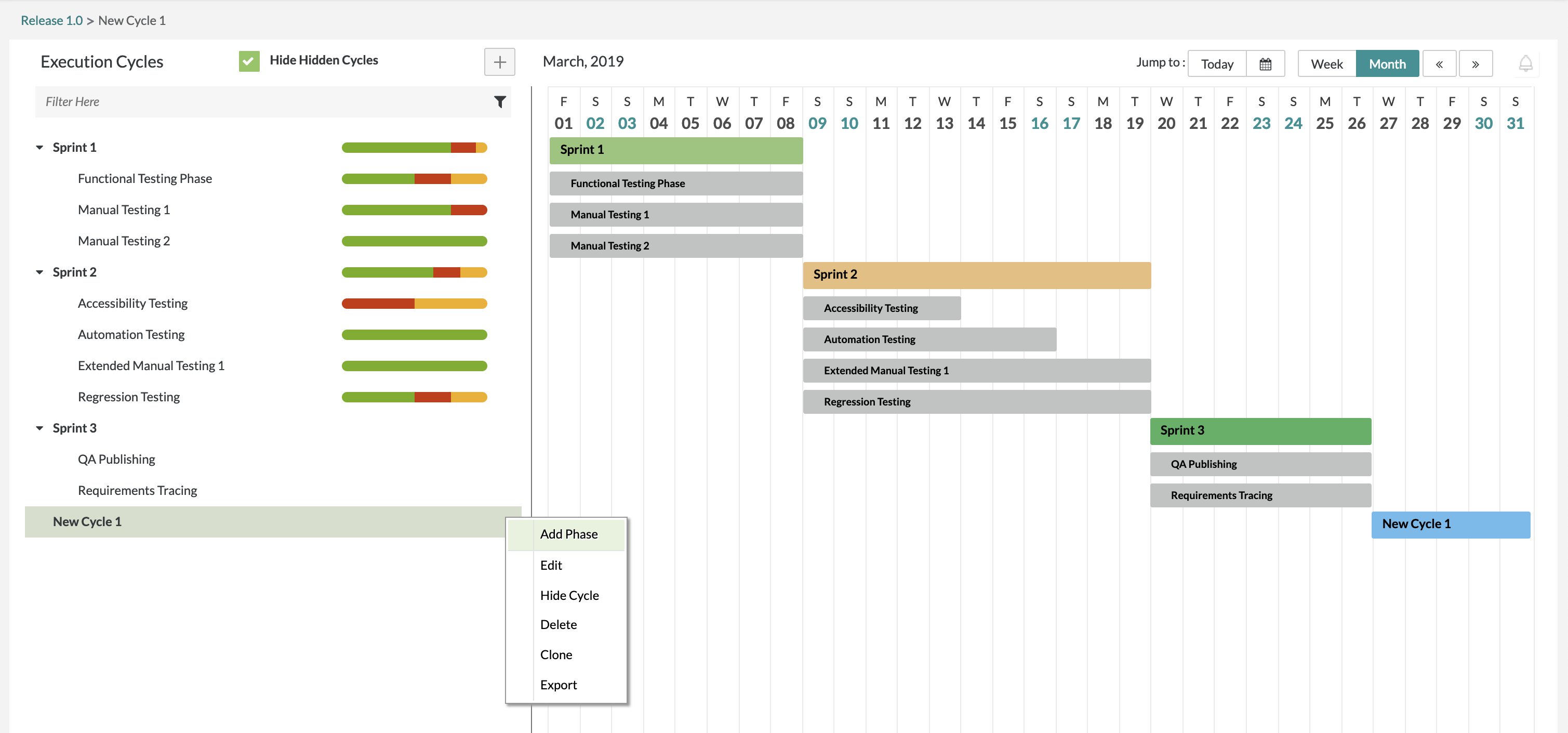 |
2. Fill in the mandatory fields for adding a testing phase:
Phase, Start Date, and End Date are mandatory fields.
Phase - The name of the testing phase that is displayed in the schedule for test planning.
Start Date - The start date for the test execution phase.
End Date - The end date for the test execution phase.
Important
Additional Notes
There are two types of test phases.
Choose Existing Phase (Structured) - This option shows all the root-level folder nodes from the Test Repository which allows the user to create a test phase based on the folder structure from the Test Repository.
Create New Phase (Free Form) - This option allows the user to create a more free-form testing phase where the user can give any naming convention to the test phase.
This feature enables users to create a more flexible testing phase, where they can use any naming convention. Additionally, users can add test cases from multiple folder nodes. The folder can only be within the current release and only applicable within the release.
When creating a phase, the start and end dates will be auto-populated with the start and end dates to match the current release. Users are prevented from creating phases that go beyond the release dates. For example, if we look at the release date below, we can see the release start date is 07/15/2019 and the end date is 07/29/2019.
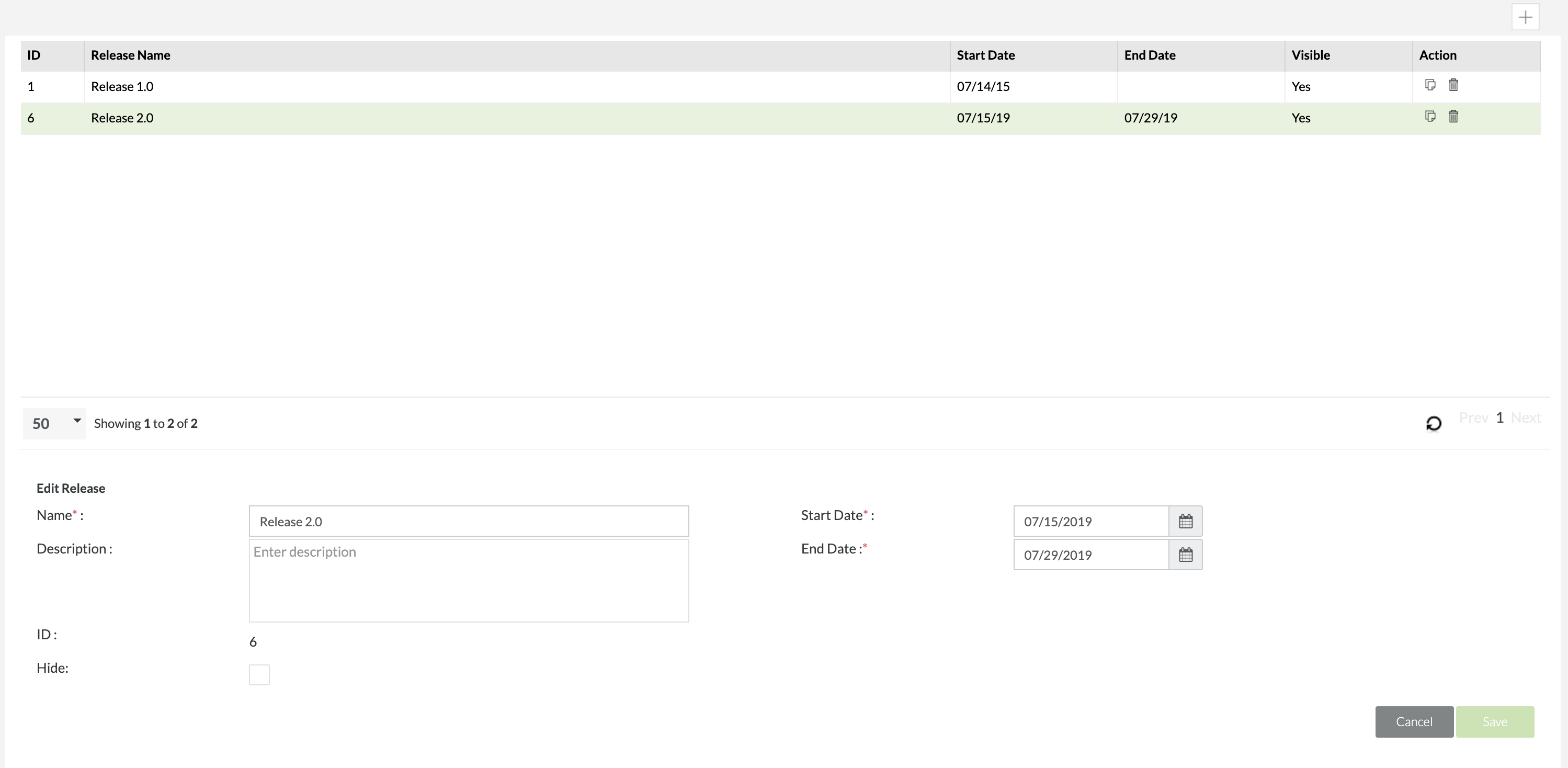 |
When we create a new phase in that specific release, the start date will automatically be set to the start date of the release which is 07/15/2019 and the end date will match the release end date which is 07/29/2019. Users can change the start and end dates for the test phase but the dates selected cannot go beyond the original release dates.
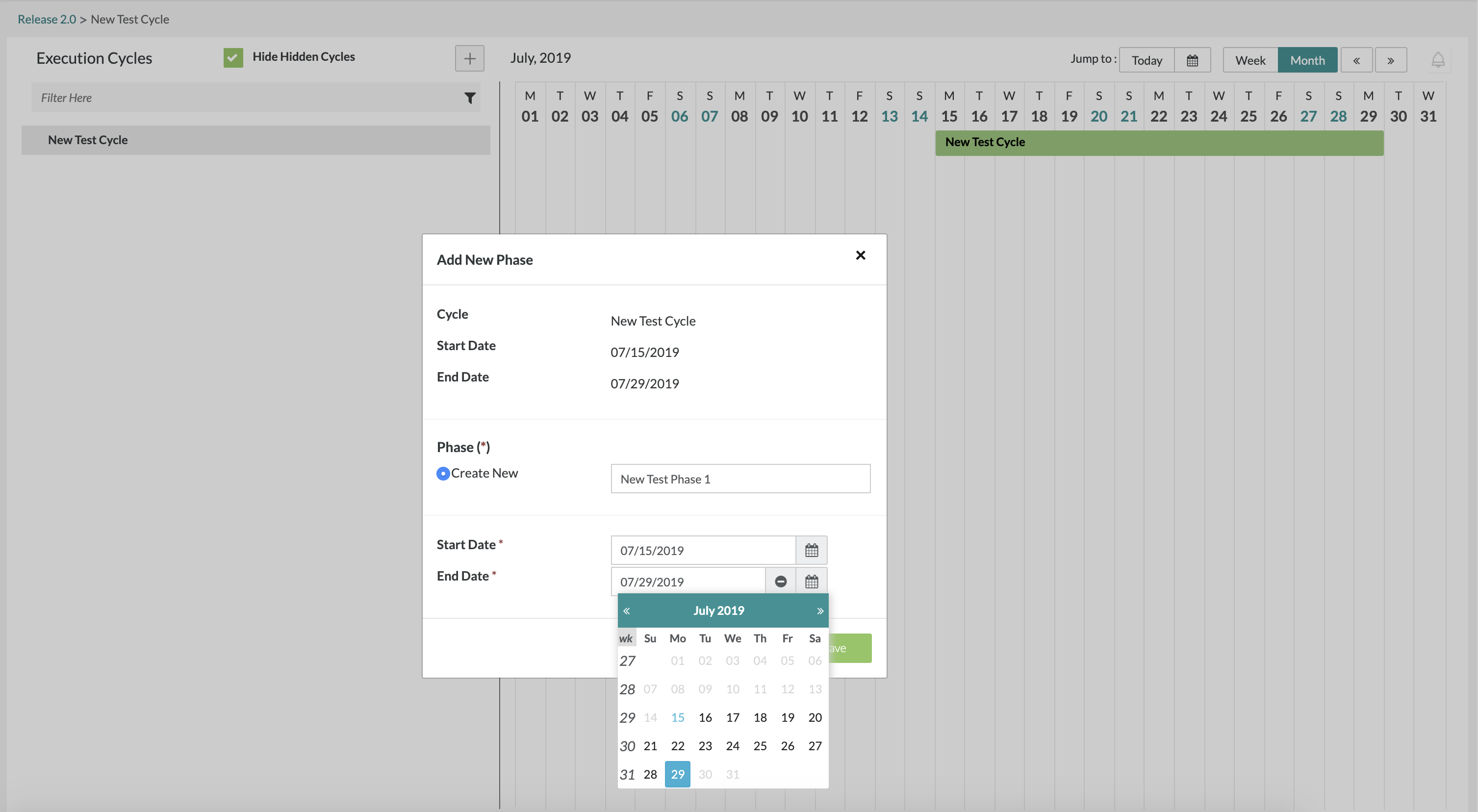 |
3. After filling in the fields, click on the "Save" Button to finalize any changes and create the phase.
Editing a Phase
1. Click on the  button on the test phase that you want to edit and click on "Edit".
button on the test phase that you want to edit and click on "Edit".
A pop-up/modal will appear with ability to edit the fields for the testing phase.
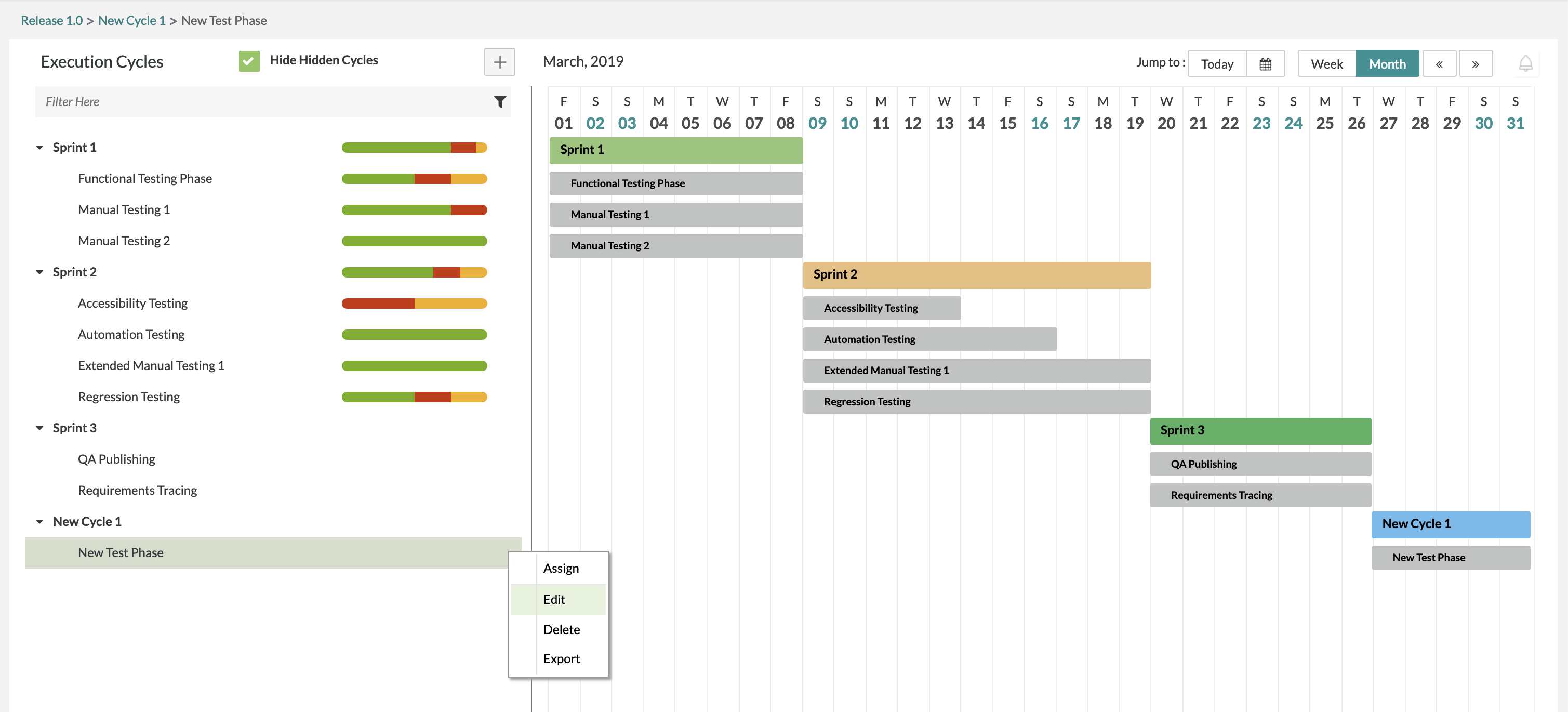 |
2. Change/Edit any of the fields for the testing phase:
Phase, Start Date, and End Date are mandatory fields.
Phase - The name of the testing phase that is displayed in the schedule for test planning.
Start Date - The start date for the test execution phase.
End Date - The end date for the test execution phase.
Important
Additional Notes
If you are editing a test phase that was created using an existing phase, the phase name cannot be changed/edited. You can change/edit the phase name if you created a new phase that wasn't built from an existing phase.
When we edit a new phase in that specific release, the users can change the start and end dates for the test phase but the dates selected cannot go beyond the original release dates.
 |
3. After filling in the fields, click on the "Save" Button to finalize any changes to the testing phase.
Deleting a Phase
1. Click on the  button on the test phase that you want to delete and click on "Delete".
button on the test phase that you want to delete and click on "Delete".
A pop-up/modal will appear asking "Are you sure you want to delete"?
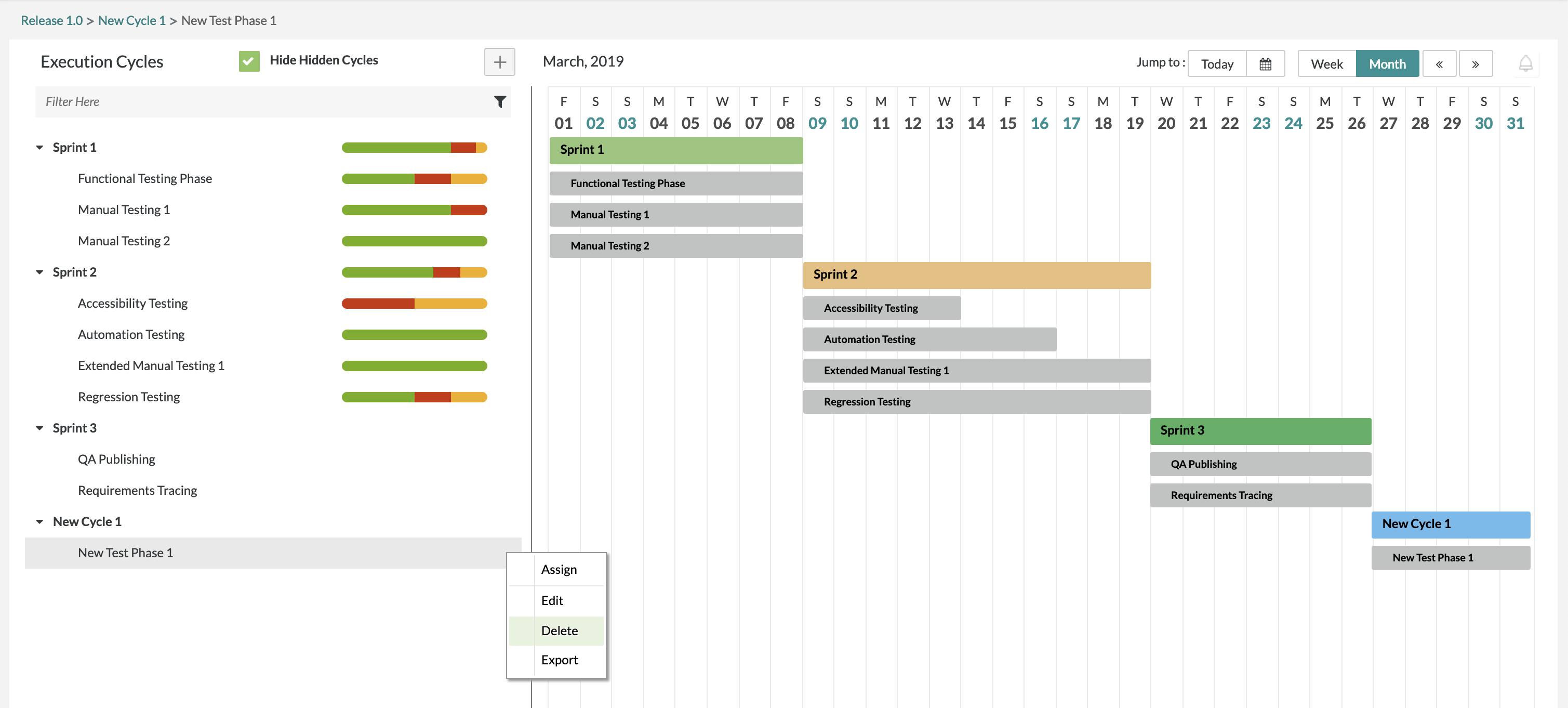 |
2. Simply click on the "Delete" Button to remove the testing phase from the cycle.
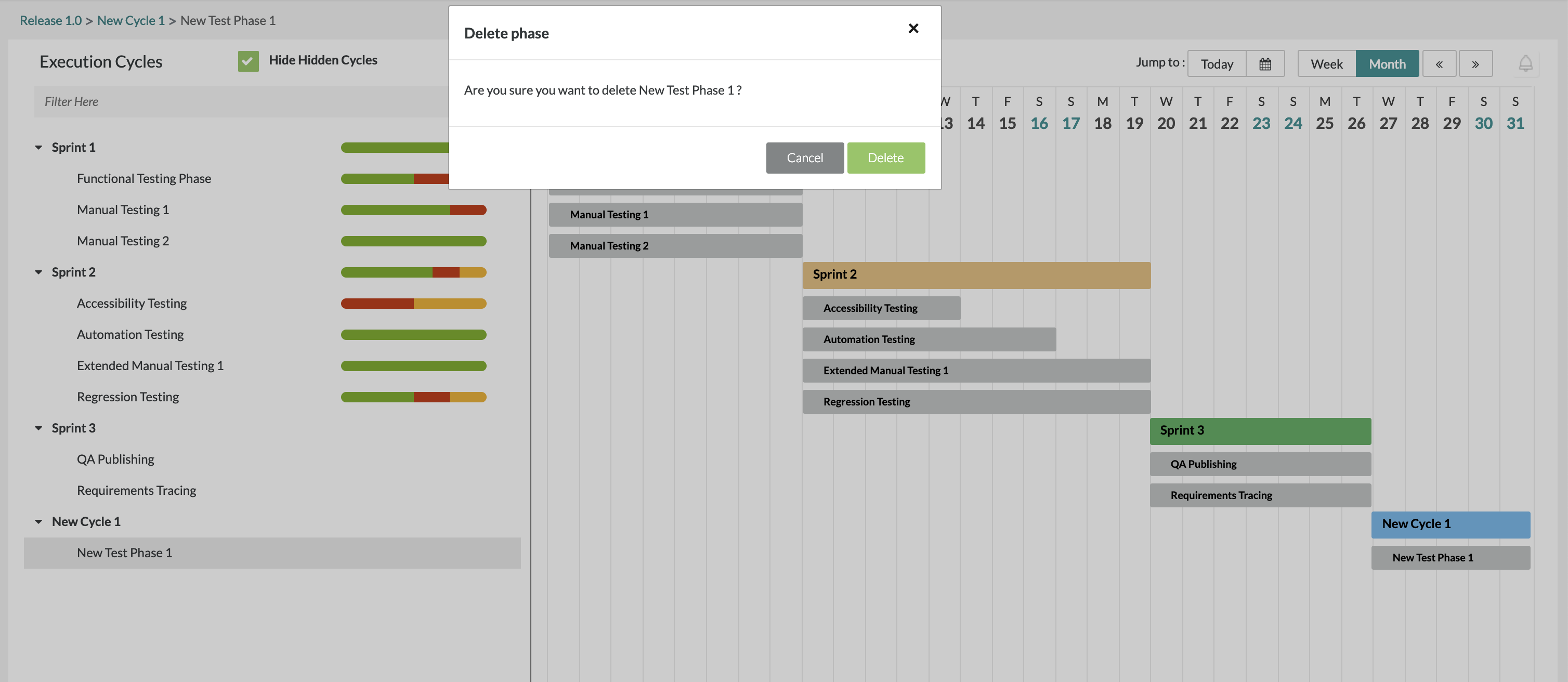 |
Exporting a Phase
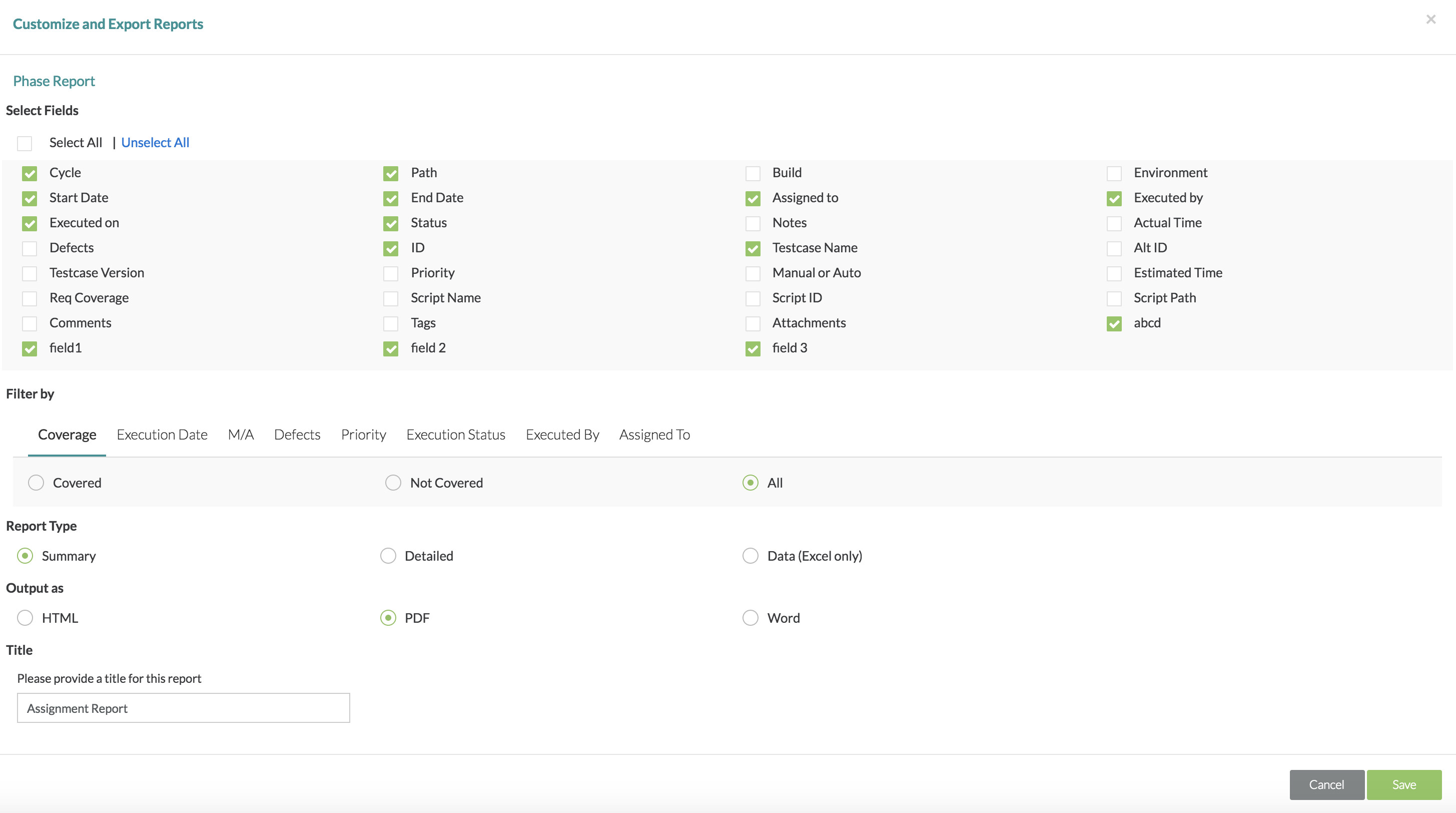 |
1. Click on the  button on the test phase that you want export and click on "Export".
button on the test phase that you want export and click on "Export".
2. After clicking export, there will be a window that pops up where you can choose exactly which fields you want to export for the test phase, what kind of reporting type, what the output file the export should be, and naming the report.
When users are selecting the report type, they have the ability to still use the Select Fields section to filter/select which fields they want to export. Users are able to select which fields they want for summary reports, detailed reports, and even data (Excel) reports.
Previously, when users wanted to export to Excel, the Excel report would use all fields regardless of whether or not it was selected.
Now, when users want to export to Excel, they have the option to select which fields are included or not in the Excel report by filtering and selecting the fields.
The default name for an exported report is labeled as "Assignment Report".
3. After selecting your options, simply click the "Save" button and the export will begin.
4. You can then click "OK" and you will get a prompt to download the file.
 |
5. Click on "Download" and the export file of your test planning will be downloaded to your computer.